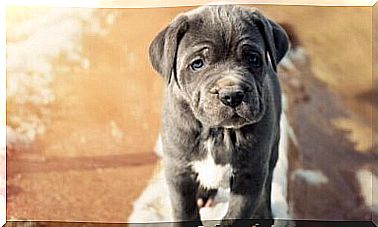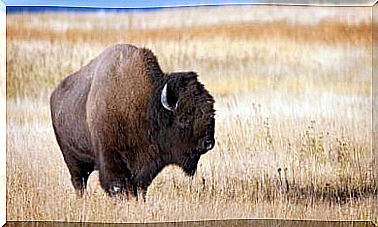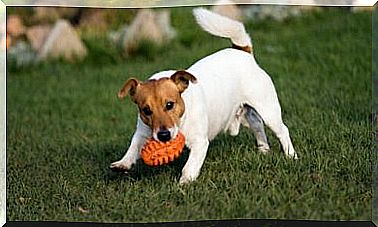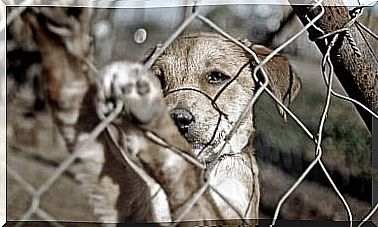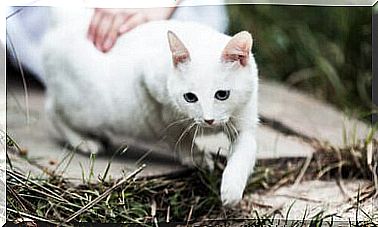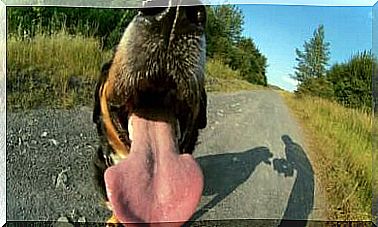Canine Neosporosis: Causes, Symptoms And Treatment

Canine neosporosis is an infectious disease caused by Neospora caninum, a parasite that affects horses, cattle, and other mammals. The dog is its only definitive host, so the pathogen specializes in sneaking into the muscles in the form of a cyst.
In general, many of the infected dogs are asymptomatic, but puppies need an adequate prognosis. Read on if you want to know more about canine neosporosis and how to recognize it.
What is canine neosporosis?
As we said earlier, this infection is caused by the parasitic protozoan N. caninum , an intracellular parasitic microorganism. Until recently it was believed that the dog was the only permanent host, but recently it has been discovered that other canids such as coyotes, gray wolves and dingoes can also be.
Veterinarians estimate that the prevalence of the parasite – the number of infected dogs in a given population – ranges from 0 to 100% depending on the region. In the United States, for example, it is estimated that around 7% of dogs are positive in some areas. In England, a prevalence of 5.5-23.6% is estimated.
The parasite takes on 3 forms during its life cycle:
- Oocysts : they are like eggs, which are formed in the intestinal tract of the dog and are excreted in the environment through the faeces.
- Tachyzoites : the infectious forms of oocysts that proliferate once ingested by the dog.
- Bradizoitis : form cysts in the animal’s muscles.

Symptoms
As we said, many of the infected dogs show no symptoms. Unfortunately, some adults and puppies are more prone to certain clinical symptoms, which are the product of the tachyzoites that cause inflammation and necrosis in the affected tissues.
Therefore, the most common symptoms are neuromuscular in nature, including:
- The characteristic symptom of the infection occurs in puppies younger than 6 months. These can present with paralysis of the hind legs, which follows an ascending pattern. This clinical evidence usually begins to appear at 3-9 weeks of the animal’s life.
- Generalized muscle atrophy occurs in an ascending pattern. The hind limbs are generally more involved than those of the chest.
- Difficulty swallowing, paralysis of the jaw, and marked cervical weakness may subsequently appear.
- Other complications include pneumonia, seizures, anorexia, tooth decay, inflammation of the heart muscle and even death.
In symptomatic puppies, muscle atrophy is progressive and results in a continuous contraction of the affected muscles. When this clinical picture appears, the prognosis of the animal is quite severe.
Treatment
Unfortunately, an effective treatment for canine neosporosis has not yet been discovered. Some antibiotics have been used in puppies with some success, but the drugs do not guarantee the survival of the animal in any way. In almost all cases, the drug of choice is clindamycin, which is used from 3 weeks to 2 months.
In general, adult dogs tend to respond better to treatment than puppies. Once the neuromuscular clinical symptoms appear in the animal, the prognosis becomes negative in a short time.
If treatment is timely and given before paralysis occurs, the prognosis may improve slightly.
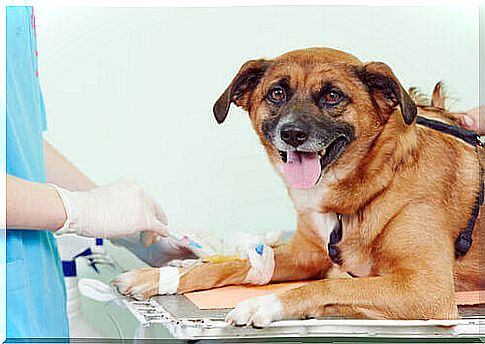
Tips to prevent canine neosporosis
Since there is no definitive treatment, the best measure that can be taken is to effectively prevent the disease. Veterinarians inform us that pregnant females can transmit the pathogen to their puppies transplacental, so we must be very careful.
In general, dogs become infected from close contact with beef or bovine tissue with bradizoite cysts. It is still not entirely clear whether oocysts in the environment are as infectious for dogs as they are for other animals. Therefore, the best thing to do is to limit contact with farm animals as much as possible.
Canine neosporosis often goes unnoticed but, when it occurs, it can be fatal. To prevent it, limit your dog’s contact with livestock and avoid walking in rural areas. When it comes to infectious diseases, prevention is always better than cure.
